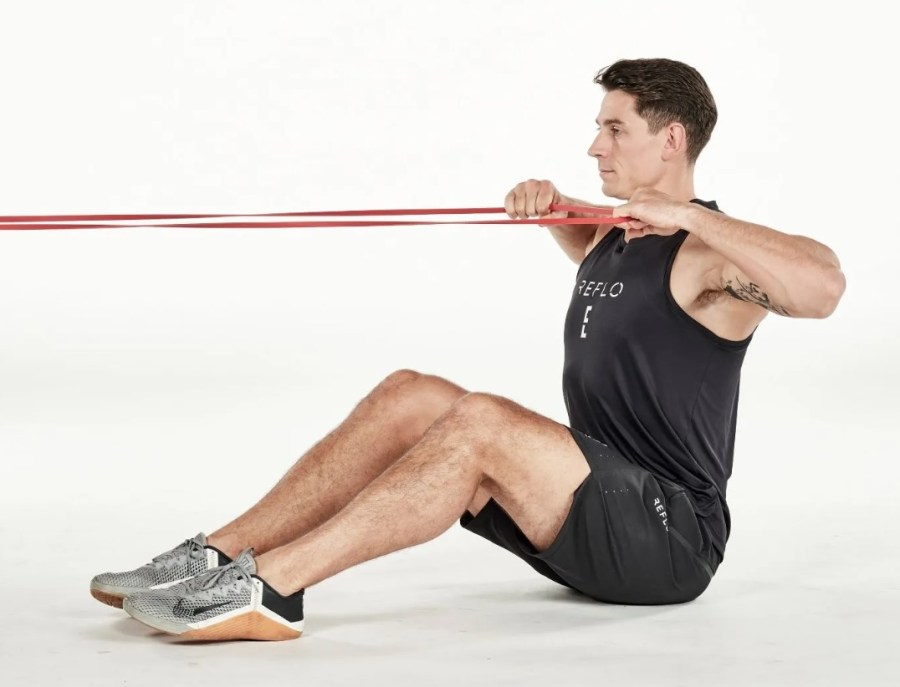Build full-body muscle at home or in the gym with our guide to the best resistance band exercises.
Even the best resistance bands are often dismissed as little more than warm-up or rehab tools, but when you know how to use them properly, they can become valuable additions to your strength training arsenal.
Resistance bands offer a flexible and affordable introduction to resistance training. They can be excellent tools for developing strength if you don’t have a wealth of weights at your disposal.
In the gym, you can add bands to weighted lifts like the bench press or deadlift to apply greater resistance throughout the movement. But if you’re working out from home, one decent set of bands is enough to get an effective full-body resistance band workout in.
Why you can trust the workouts in Men’s Fitness
At Men’s Fitness we pride ourselves on delivering information that serves a singular purpose: to improve some aspect of your health, fitness or wellbeing. For over 16 years, we’ve been publishing authoritative health and fitness content – written by our expert editors and contributors – in the form of the monthly Men’s Fitness magazine. Each of our workouts has been created by either a highly experienced editor or expert contributor, and has been tested and used in real-world situations. This workout was created by David Birtwistle, a movement and nutrition consultant, Reflo ambassador and founder and head coach at Endeavour.
Best resistance band exercises for upper body
- Resistance band deadlift
- Resistance band lateral raise
- Resistance band kneeling shoulder press
- Resistance band bent-over row
- Resistance band seated face pull
- Resistance band press-up
- Resistance band single-arm front raise
- Resistance band biceps curl
- Resistance band upright row
- Resistance band pull-apart
- Resistance band lying chest press
- Resistance band single-arm triceps extension
Resistance band deadlift
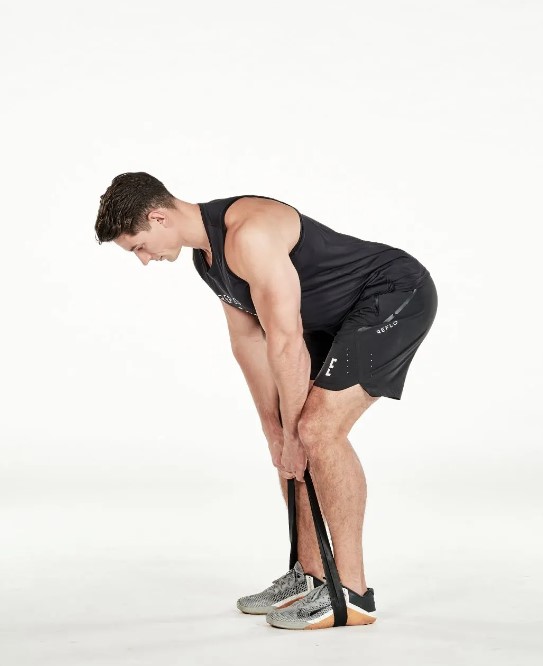
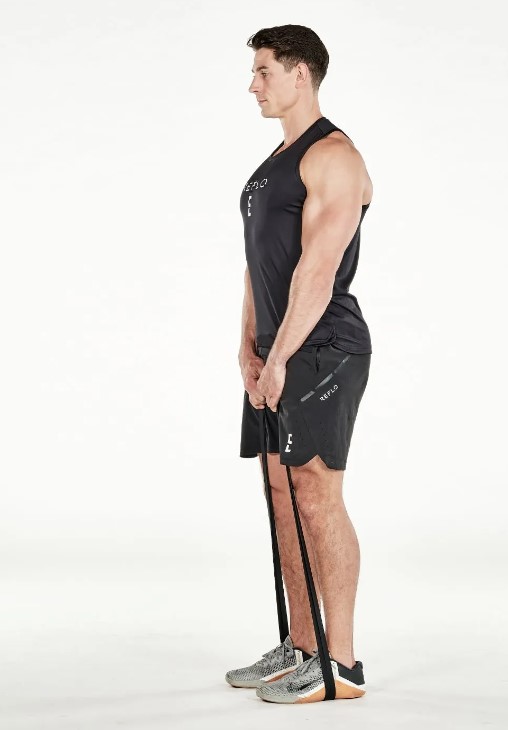
Target areas: Lower back, hamstrings
Why I like it: In one respect, the banded version of this exercise is better than the weighted one. That’s because, while both versions put your muscles under tension for the concentric part of the lift (the way up), the banded version maintains that tension on the eccentric part (the way down too).
- Stand on the band with your feet close together
- Grip the ends of the band
- Take a deep breath and stand up straight
- To initiate the movement, reach the hips back, tilting your tailbone up and keeping your lower back flat
- Push your feet into the floor, drive your hips forward, and squeeze your glutes to transition back to standing
Resistance band lateral raise
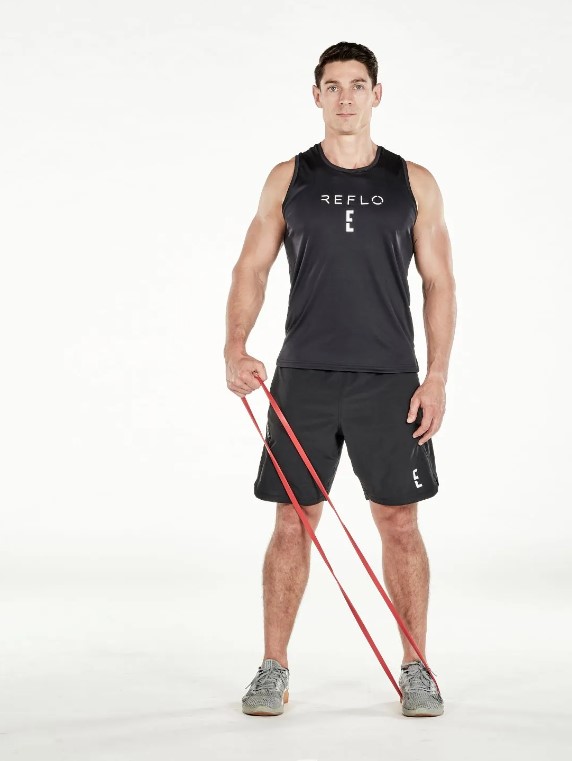
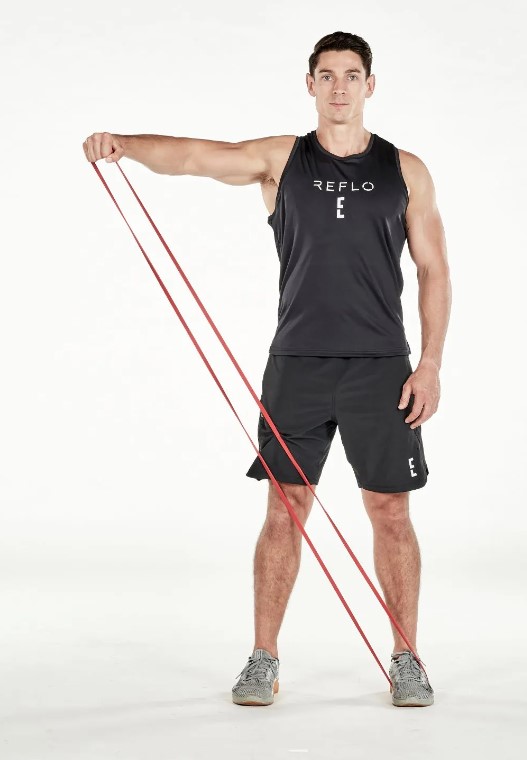
Target areas: Delts
Why I like it: Either with bands or weight the lateral raise is one of my favorites because it’s great for developing shoulder strength. And strong shoulders can improve your performance in sports and activities that require upper body strength and stability.
- Stand tall and anchor one end of a long band under your foot
- Grab the other end with your opposite hand
- Brace your core and raise the band out to the side, taking it to shoulder height
- Lower with control, but don’t let the band pass the line of your hips to maintain muscle tension
Resistance band kneeling shoulder press
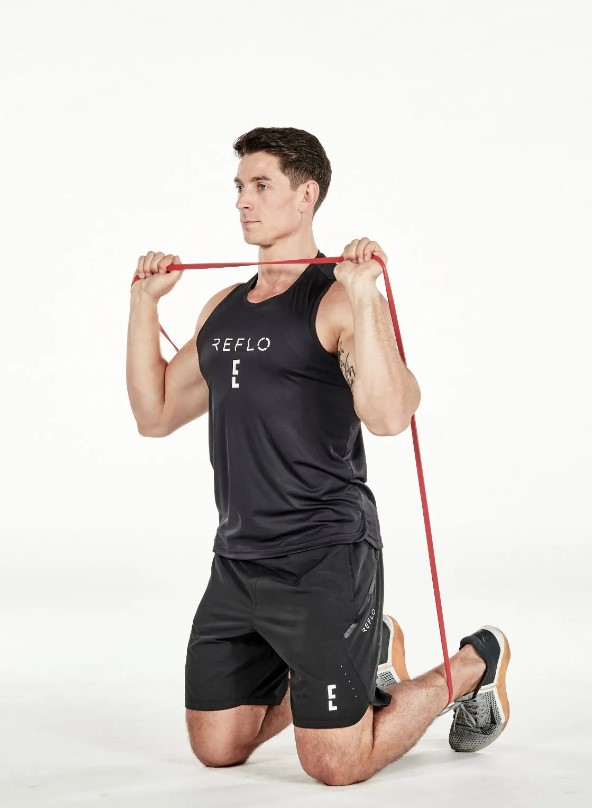
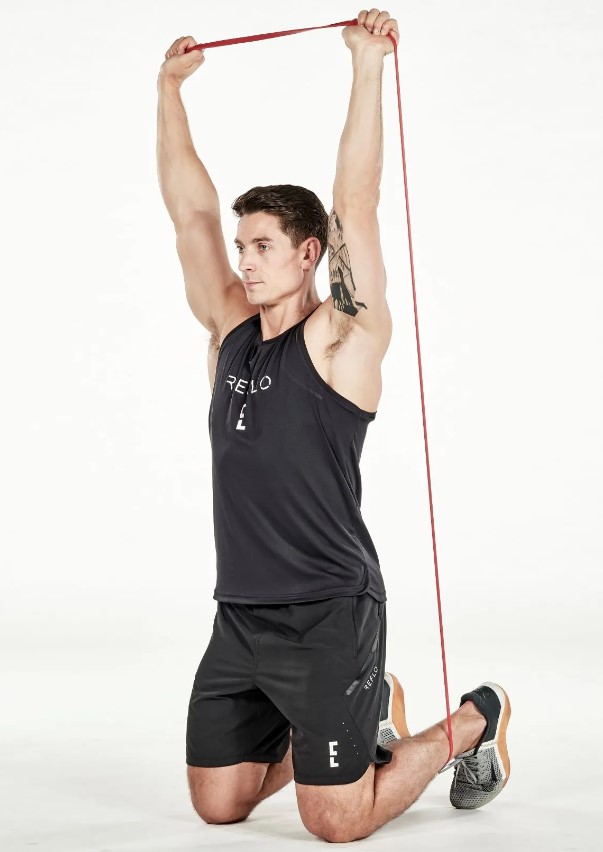
Target areas: Shoulders, core
Why I like it: While it retains the benefits of the barbell press, this version features a more natural and shoulder-friendly movement. Plus it can be performed standing, on a bench, kneeling or on the floor.
- Take a shoulder-width grip of the band
- Hold tight with the band in contact with the heels of your hands
- Throughout the exercise, your elbows should be directly under your hands
- Press the band overhead and lock your elbows
- Pull the band back down, keeping your elbows tucked in
Resistance band bent-over row
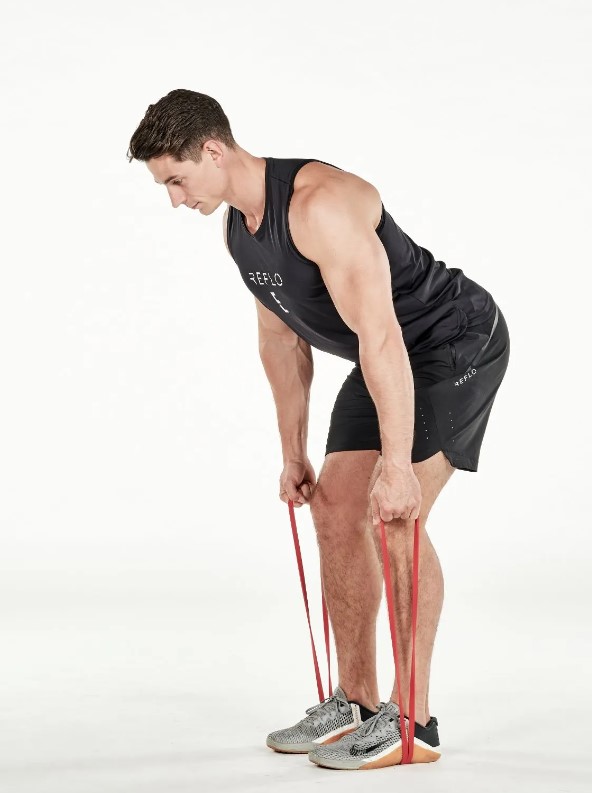
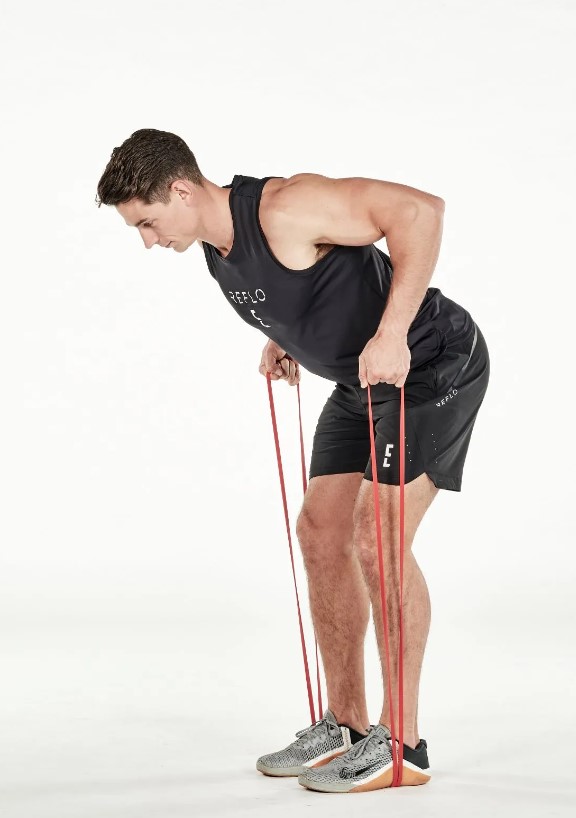
Target areas: Back, biceps
Why I like it: The banded bent-over row is a good choice for those either worried about back injuries or who have had minor back niggles. That’s because it helps strengthen the muscles that support the spine and improves overall posture and upper-body strength.
- Stand in the middle of a long band
- Hinge at the hips to bend over and hold onto both ends
- Row each end to your hips
- Squeeze your lats at the top of the movement, then lower with control
Resistance band seated face pull
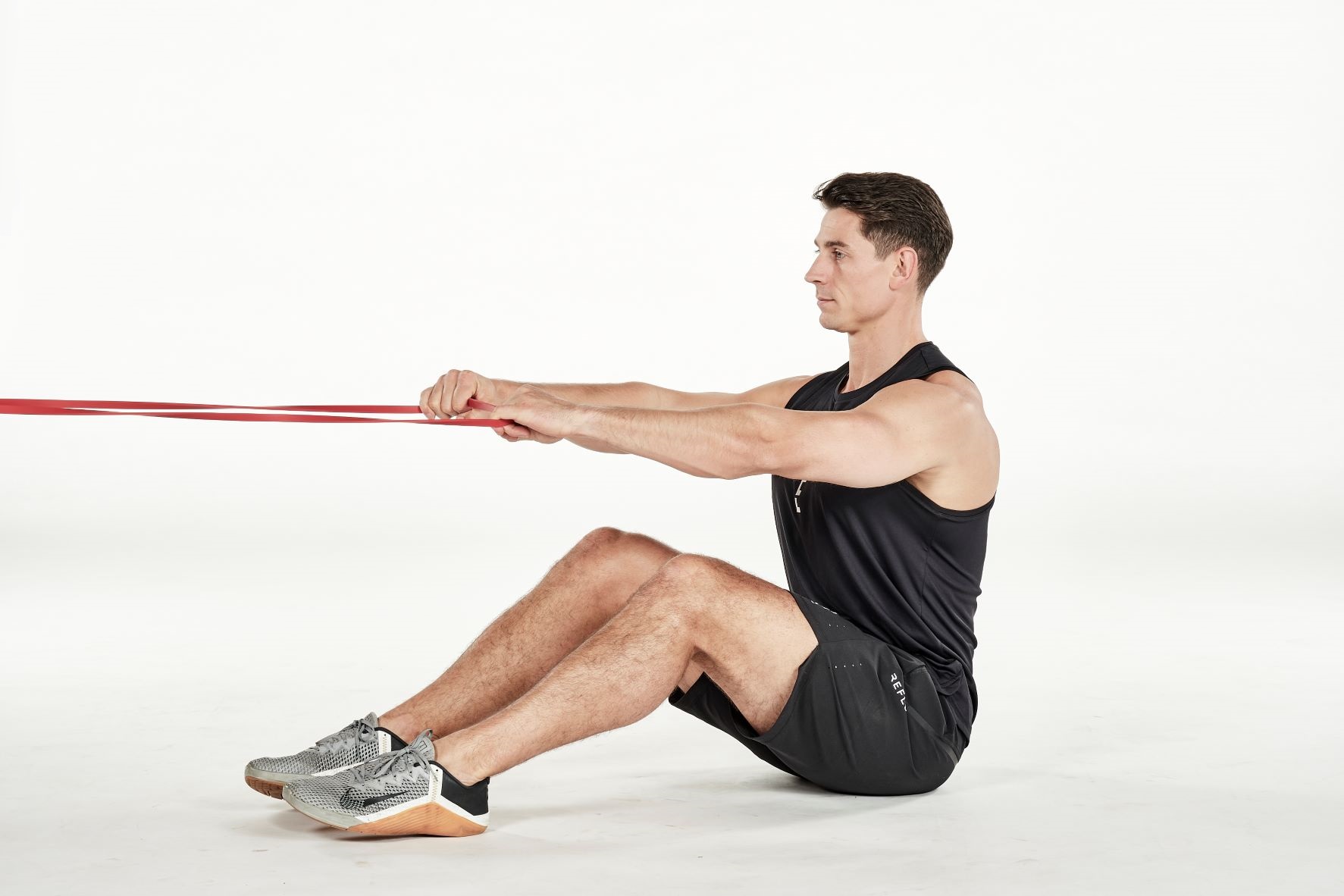
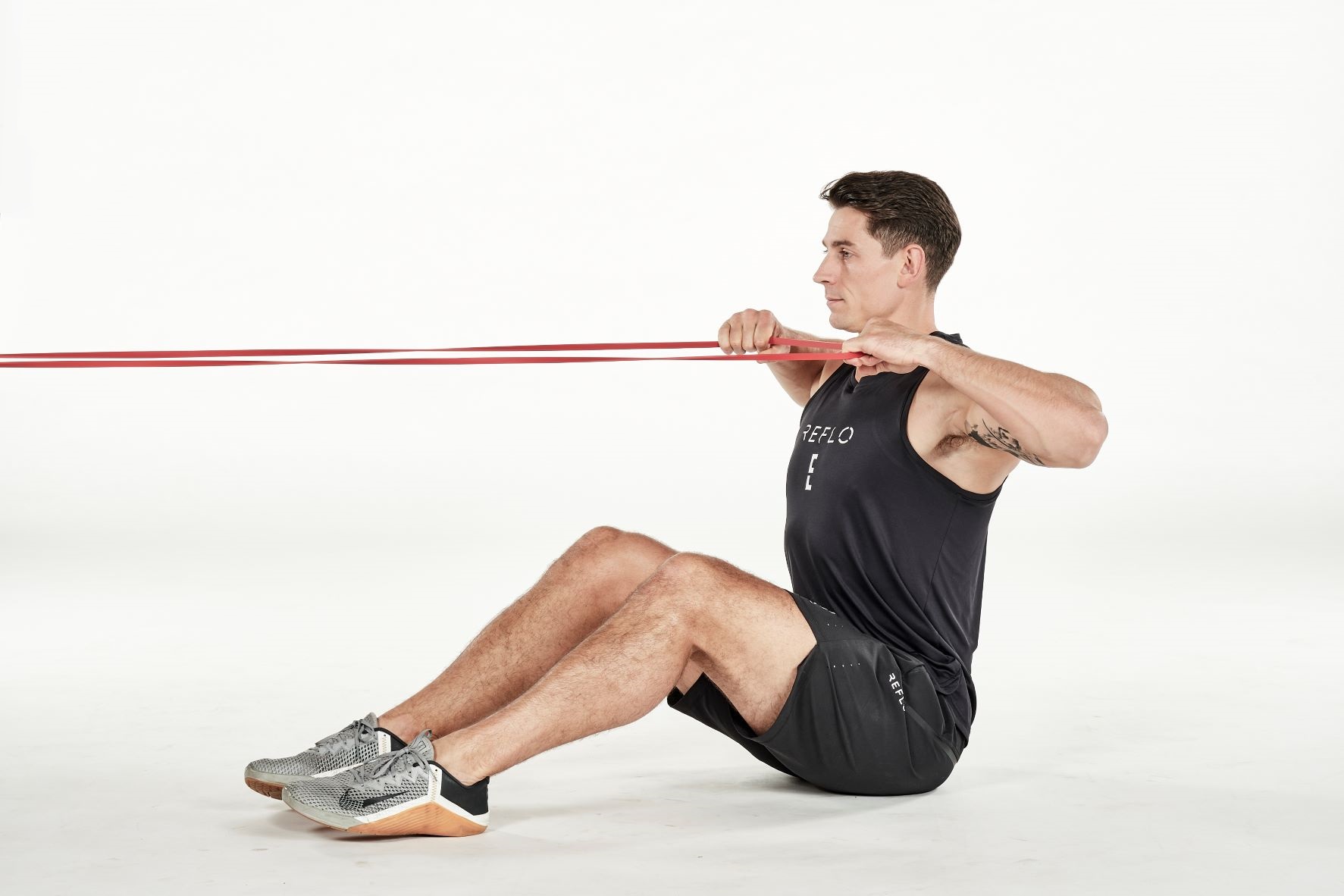
Target areas: Upper back
Why I like it: It’s a subtle variation to using a cable machine and produces a different resistance curve. But this version still targets your upper back muscles, helping to improve shoulder stability and reducing injury risk.
- You’ll need an anchor point again for this one
- Loop the band around it and take a seat a foot or two away
- Grab hold of both ends of the band and pull it towards your head, keeping a straight back and strong core
- As you pull, flare your elbows out to the sides – you should feel this move in your lats
Resistance band push-up
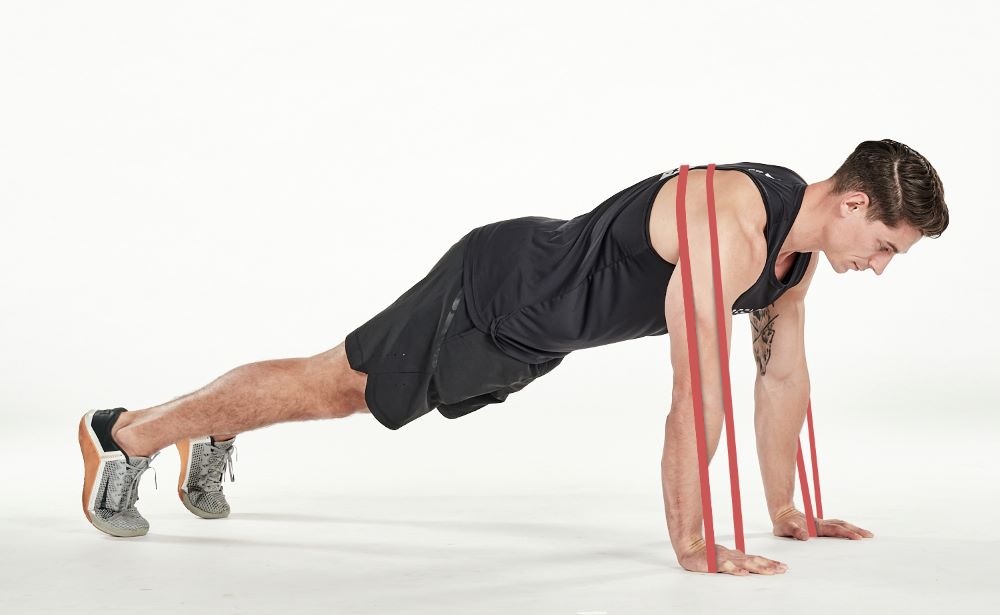
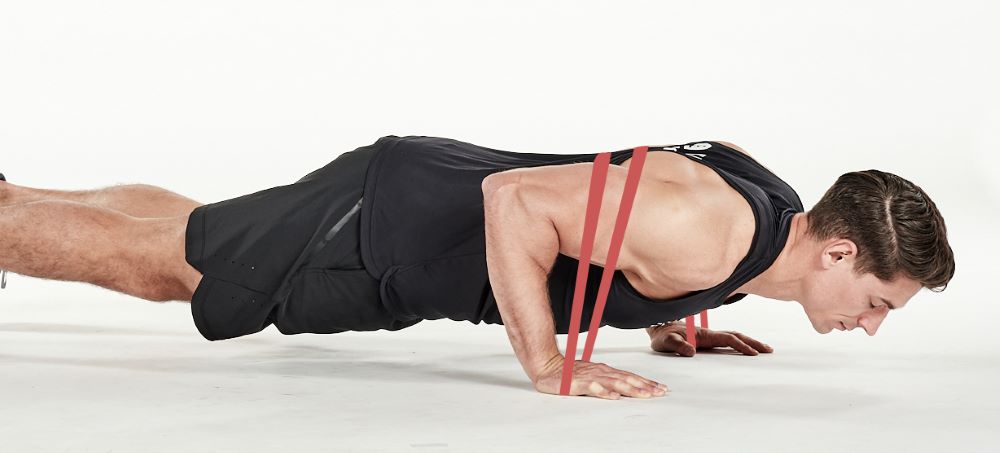
Target areas: Chest, core, shoulders
Why I like it: The addition of a resistance band increases muscle activation over a traditional push-up, but the main bonus for me is that it engages the core muscles too – a key component in improved posture and decreased injury risk.
- From a kneeling position, grab your resistance band and bring it around your upper back
- Loop each end around your palms, then get into a press-up position
- Press the heels of your hands into the floor and brace your abs
- Descend into a press-up, then explosively drive back up
Resistance band single-arm front raise
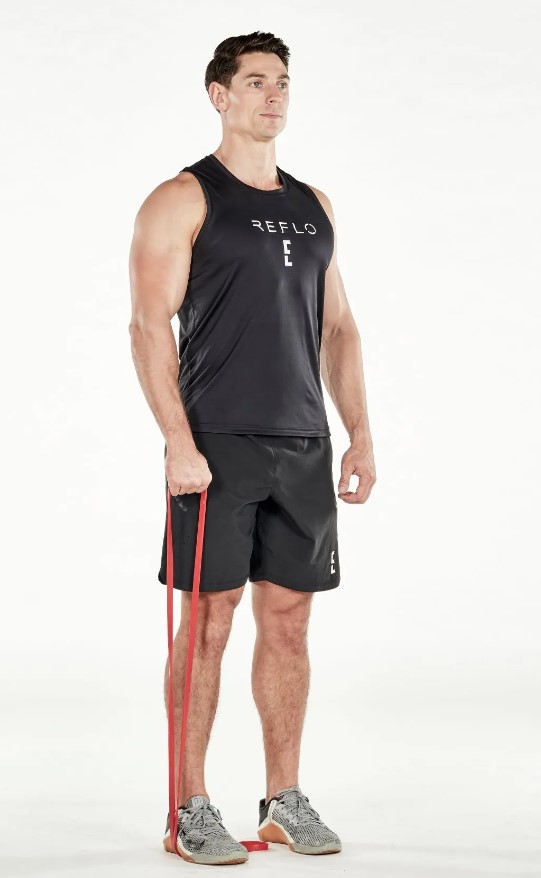

Target areas: Delts
Why I like it: The single-arm front raise is a good choice if you have an injury or other limitation to one arm. I find it’s also an effective alternative if the band you’re using is too low resistance for the traditional two-handed front raise.
- Loop one end of a long band under your foot
- Stand tall and hold onto the other end with the hand on the same side
- Brace your core and, with a straight arm, raise the band in front of you until it reaches shoulder height
- Lower with control
Resistance band biceps curl
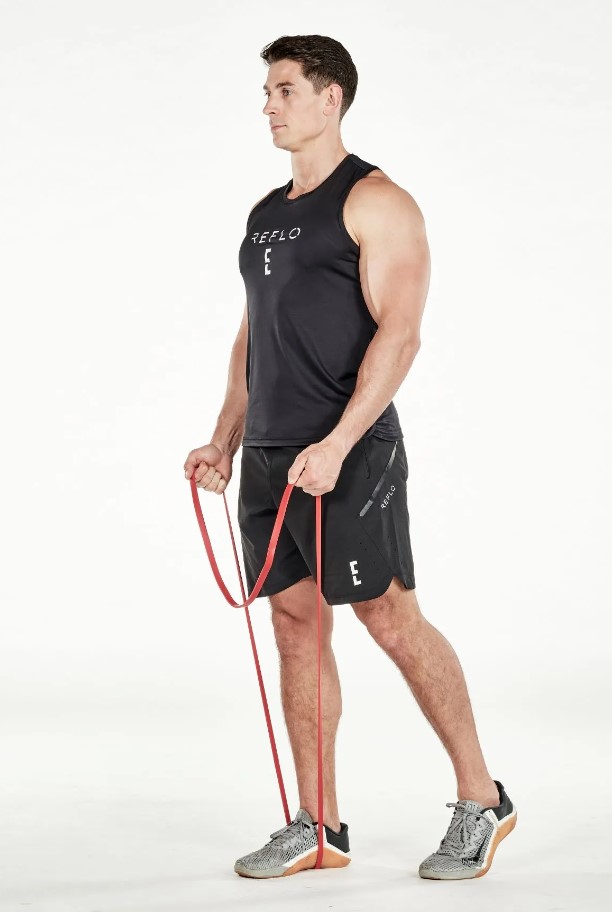
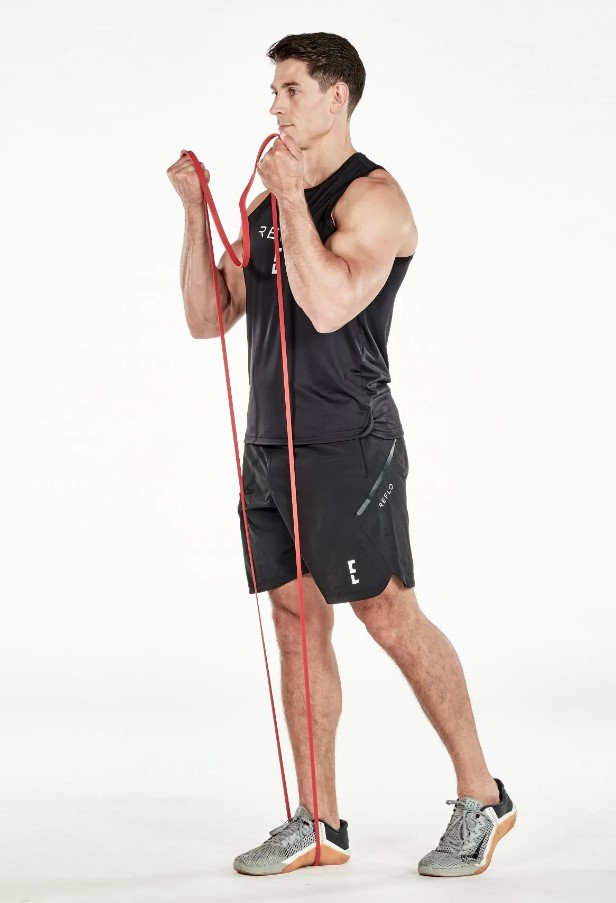
Target areas: Biceps, core
Why I like it: Like the deadlift, the banded version of this exercise provides constant tension in both the concentric and eccentric phases, providing a more effective workout overall.
- Loop the band under your feet
- Grip the other end of the band with hands at shoulder-width apart
- Hold the band with arms extended
- Curl the band up to chest height, squeezing your biceps at the top
- Lower with control
Resistance band upright row
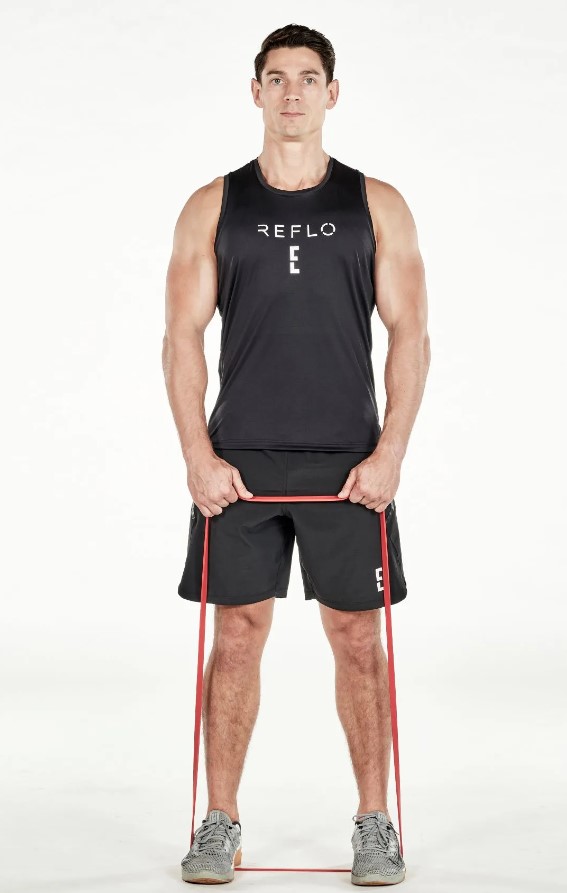
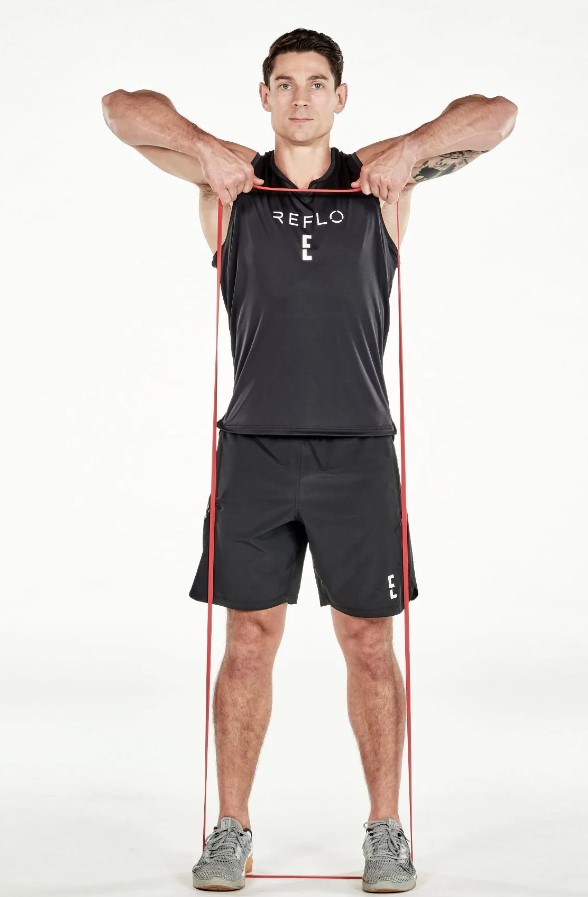
Target areas: Shoulders, core
Why I like it: I always recommend this one for improving posture. Targeting the upper back muscles, notably the trapezius and rhomboids, it does so by strengthening the muscles that support the shoulders and spine.
- Stand tall, with the middle of a long band positioned under your feet
- Hold onto the free side of the band, with hands shoulder-width apart
- Raise the band to around neck height, by leading with your elbows and bringing them as high as you can
- Lower and repeat
Resistance band pull-apart
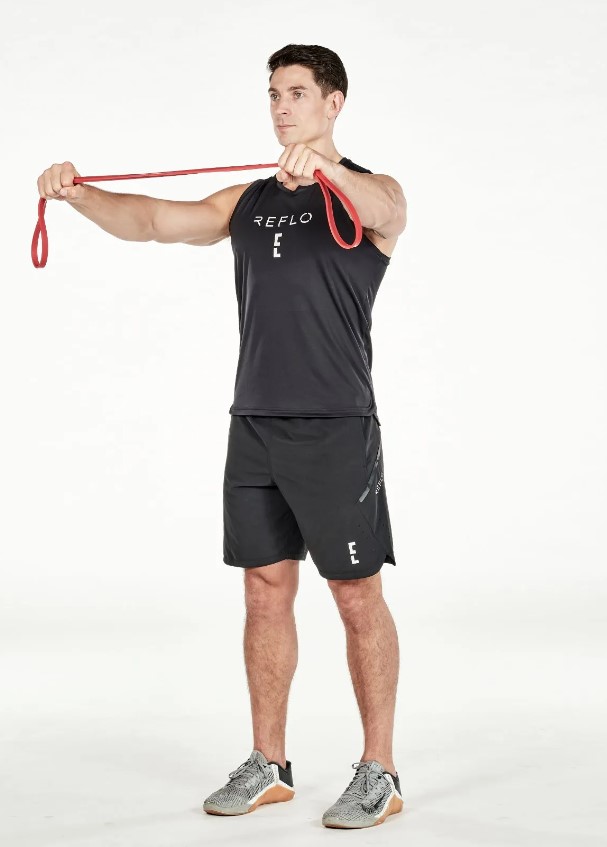
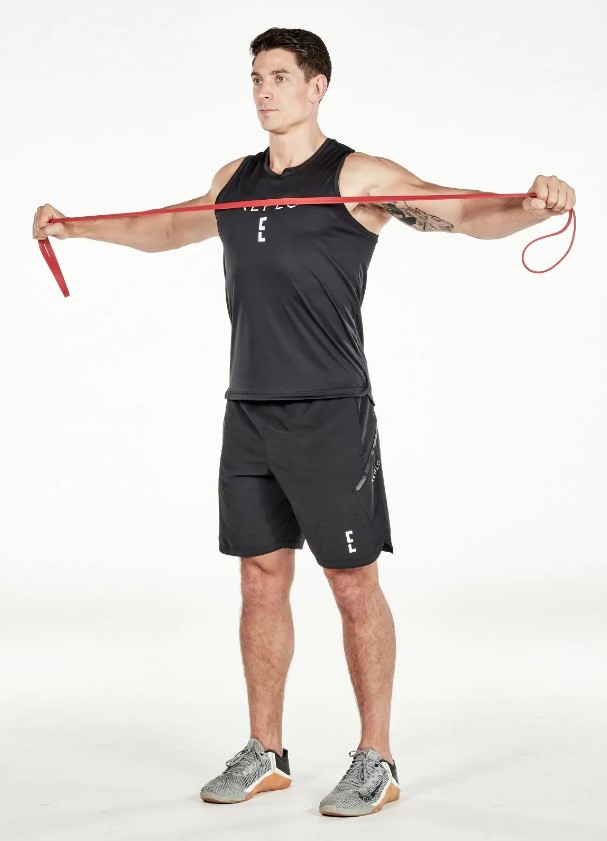
Target areas: Upper back
Why I like it: Not only does this exercise improve shoulder and upper back mobility and strength, it’s also a great warm-up for other upper-body strength exercises.
- Stand holding a band with hands shoulder-width apart
- Raise the band to shoulder height, with arms extended
- Pull the band horizontally across your chest
- Pull as far as you can, feeling the squeeze in your upper back
- Pause for a second in the pulled position, with retracted shoulder blades, then return to arms out front
Resistance band lying chest press
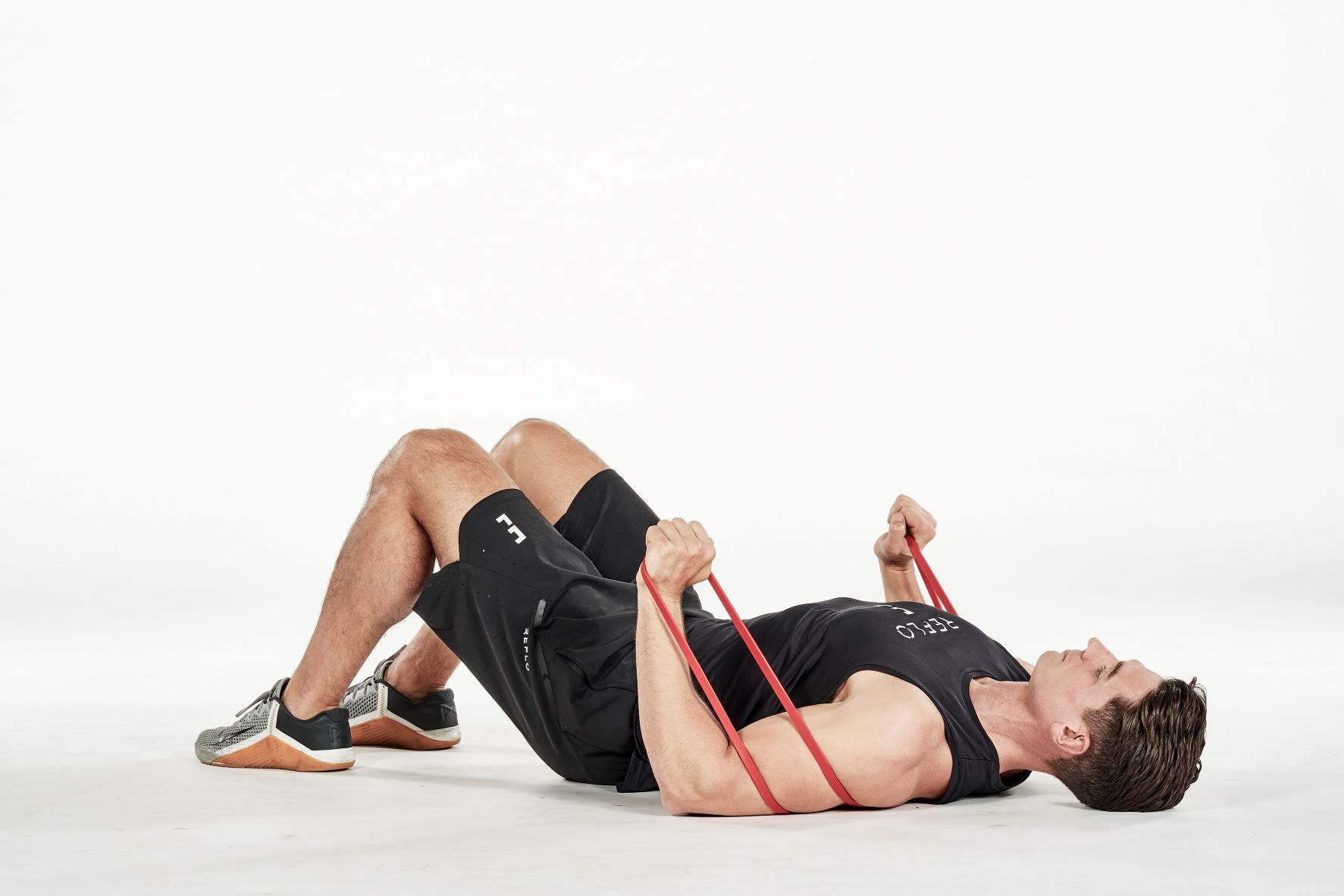
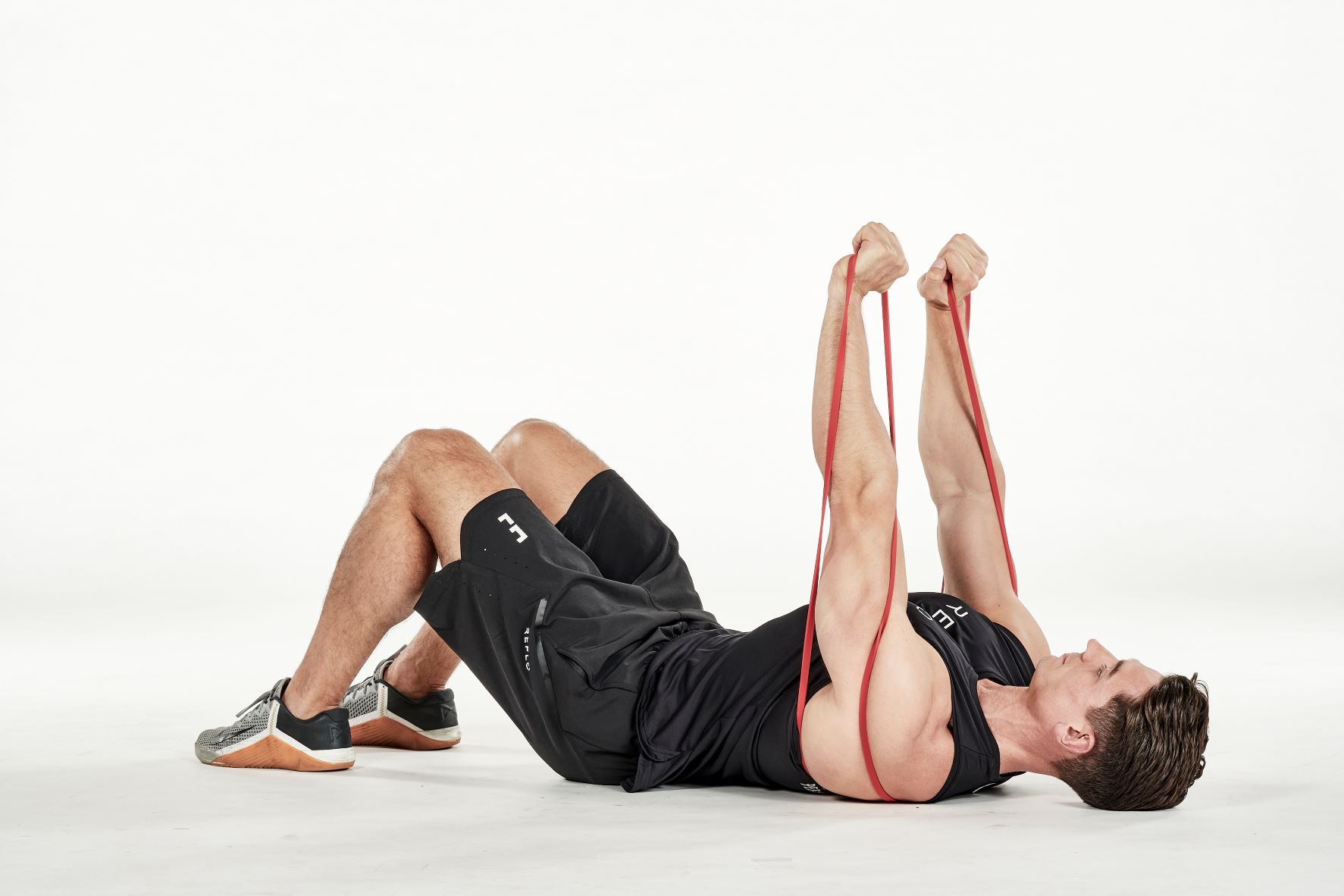
Target areas: Chest
Why I like it: This version of the chest press is still a great way to hit your pectoral muscles, triceps and anterior deltoids. But unlike with dumbbells or barbells it can easily be done when you’re on the move and is my favorite hotel room exercise.
- From sitting, bring the band around your upper back and hold onto each end
- Lie down with knees bent
- Initiate the movement by pressing the band directly over your chest – feeling the squeeze in your pecs
- Pause for a second at the top of the movement, then lower until your triceps lightly touch the floor
Resistance band single-arm triceps extension
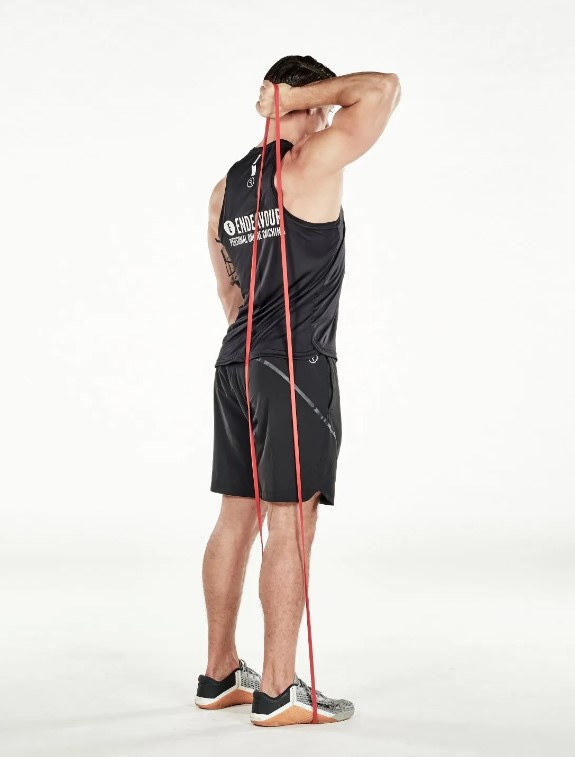

Target areas: Triceps
Why I like it: If you’re looking for an isolation exercise to concentrate on your triceps, this is it. You’ll improve triceps coordination, stability and upper-body power too.
- From standing, loop one end of a long band around your foot
- Squat down to grab the other end and bring it to shoulder height
- Bring it around your head, so you’re holding it with a bent elbow behind your head at around shoulder height
- Press the band directly overhead, keeping your elbow fixed in one place
Best resistance band exercises for lower body
- Resistance band front squat
- Resistance band lateral step-out squat
- Resistance band single-leg deadlift
- Resistance band split squat
Resistance band front squat

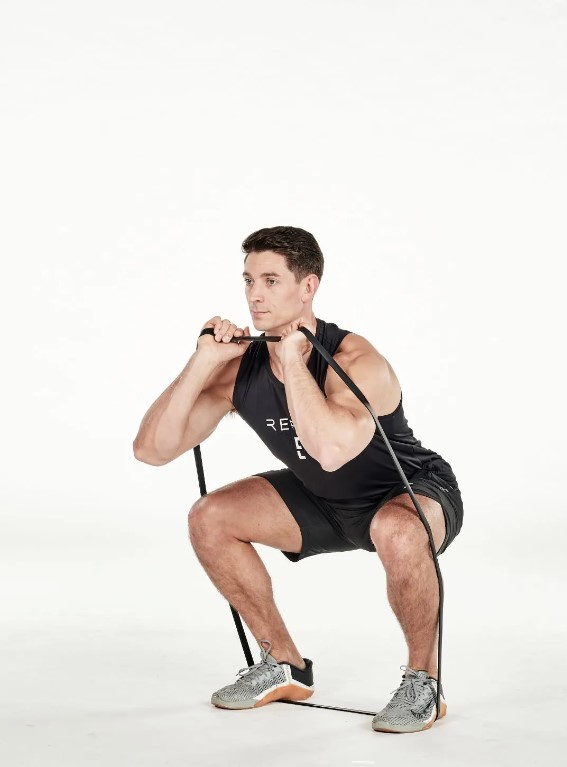
Target areas: Quads, glutes, core
Why I like it: With resistance band squats you’r’re getting consistent tension throughout the entire range of movement. You also get to work multiple muscle groups, including secondary muscles like the back and core, for better balance and stabilization.
- Loop one end of the band around the base of your feet
- Cross your hip crease with the middle of the band
- Loop the other end over your shoulders
- Squat down with control, keeping core braced and shoulders retracted
- Drive through your heels, raise and tuck your hips
Resistance band lateral step-out squat
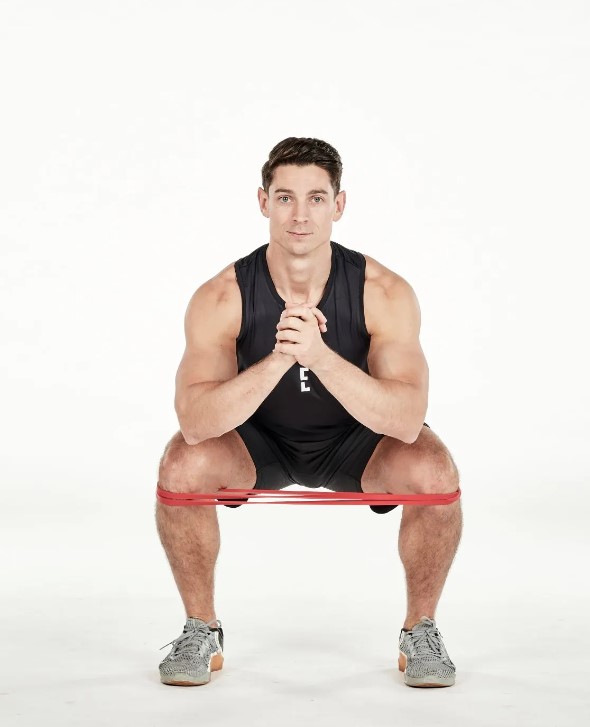

Target areas: Quads, glutes
Why I like it: For me the lateral step-out squat is another win-win. Not only can you improve hip stability by strengthen the hip abductors; you can also use it as a warm-up to improve hip, foot and ankle stability as well as knee joint stabilization.
- Start by looping a short band around both knees
- Squat until your quads are parallel to the floor, keeping your chest up and back straight
- Maintaining this squat, step out to the side so the band tightens
- Step back to the middle and repeat to the other side
Resistance band single-leg deadlift
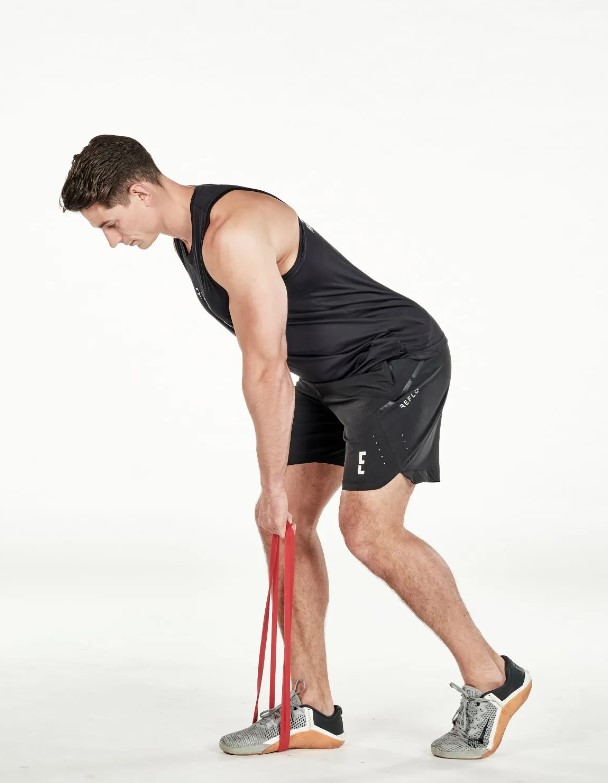
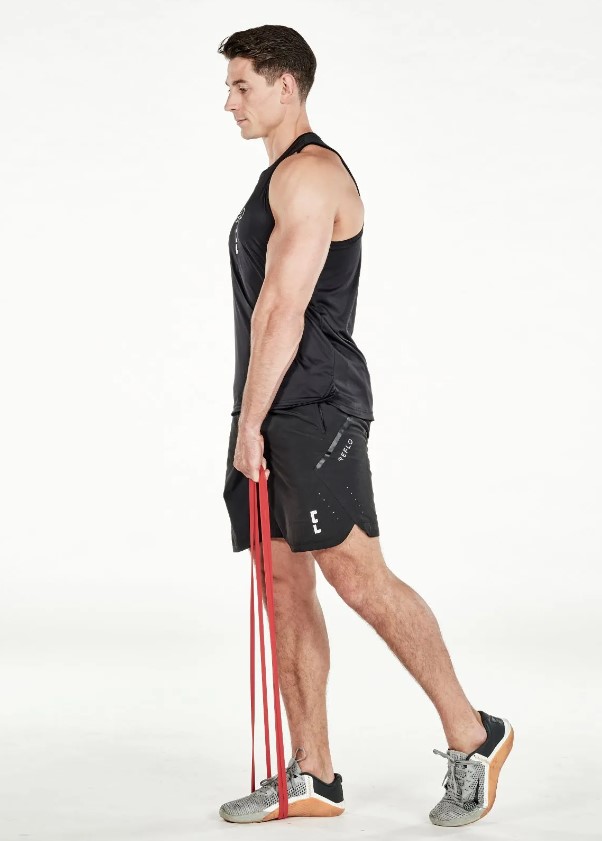
Target areas: Hamstrings, core, balance, proprioception
Why I like it: This single-leg variant is a great exercise to train your balance, coordination and stability while emphasizes your glutes. You’ll be doing your core plenty of favors too.
- Stand on one end of a resistance band and grab the other with the opposite hand
- Hover your free foot off the floor and keep a very slight bend in your front knee
- Hinge at the hips and raise your free foot behind you, lowering the band until your torso is parallel to the floor
- Return to standing
Resistance band split squat
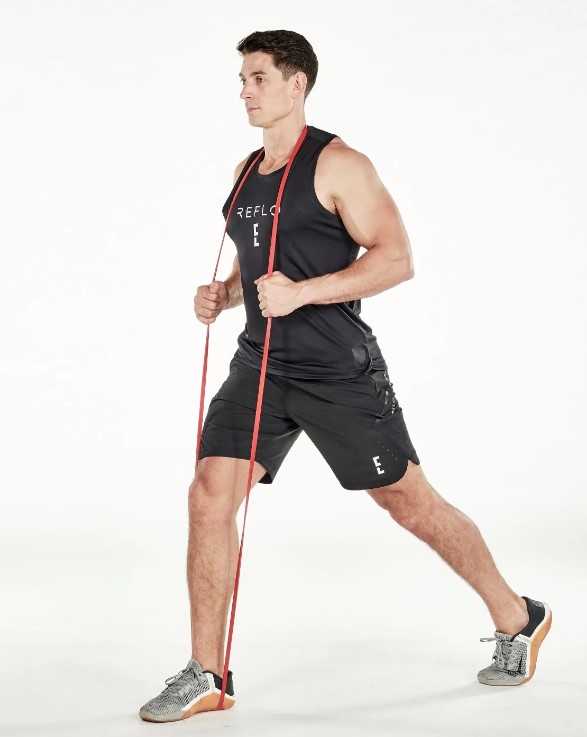
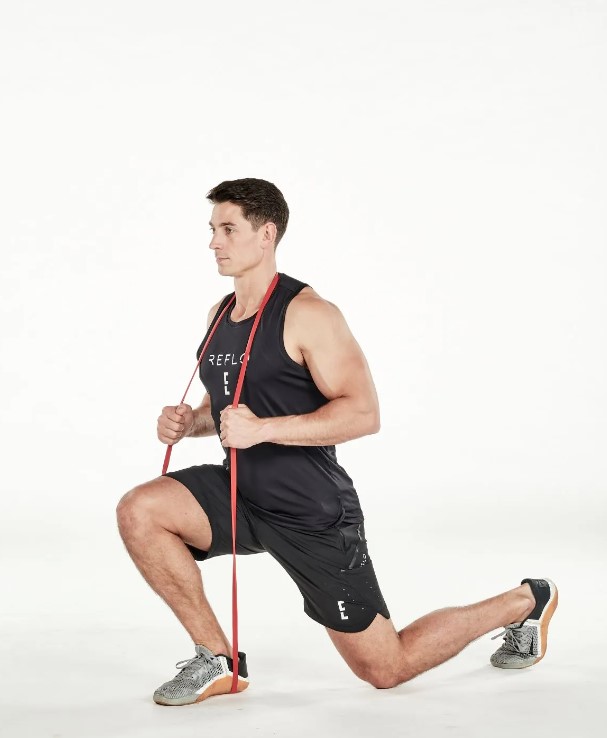
Target areas: Glutes, hamstrings, quads
Why I like it: You can really tailor this one to suit you by varying the depth of your squat. However deep you go, you’ll still be targeting multiple muscle groups including yours quadriceps, glutes, hamstrings and calves.
- Loop one end of a long band around your front foot and the other around your upper back
- Step your free foot back and raise your heel off the floor
- With your weight slightly over your front leg, bend both knees to 90 degrees
- Drive through your front heel to return to standing
Best resistance band core exercises
Resistance band side plank high pull
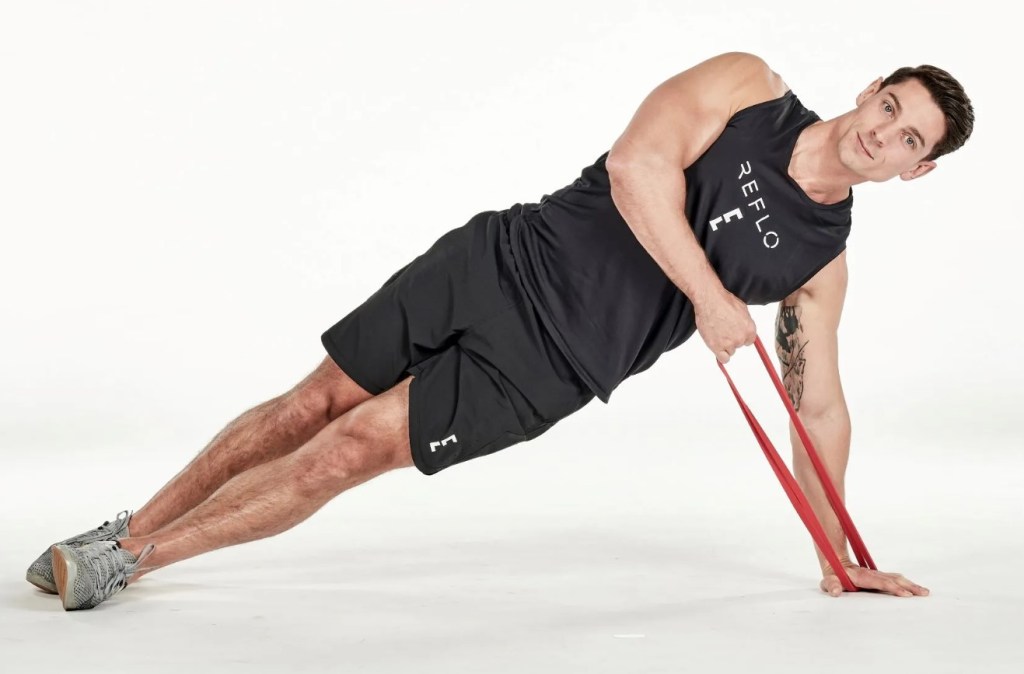
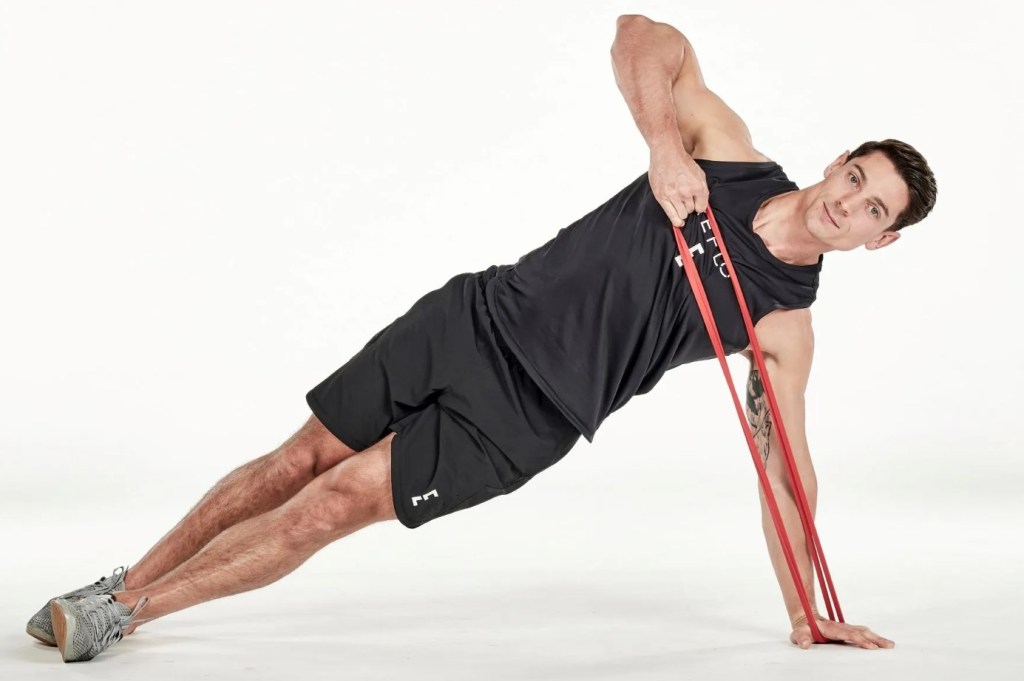
Target areas: Core, shoulders
Why I like it: Another good option for addressing postural imbalances, you’ll also target the quads, glutes and calves, as well as your core.
- Assume a high side plank position: feet stacked, bottom arm extended, torso in a straight line from shoulders to hips
- Position one end of a band under your planted hand and hold onto the other end with your free hand
- The starting position is with top elbow bent, band loose
- Initiate the movement by raising your elbow and pulling the band tight
- Pull as far as possible, while maintaining your form in the high side plank position
Resistance band plank row

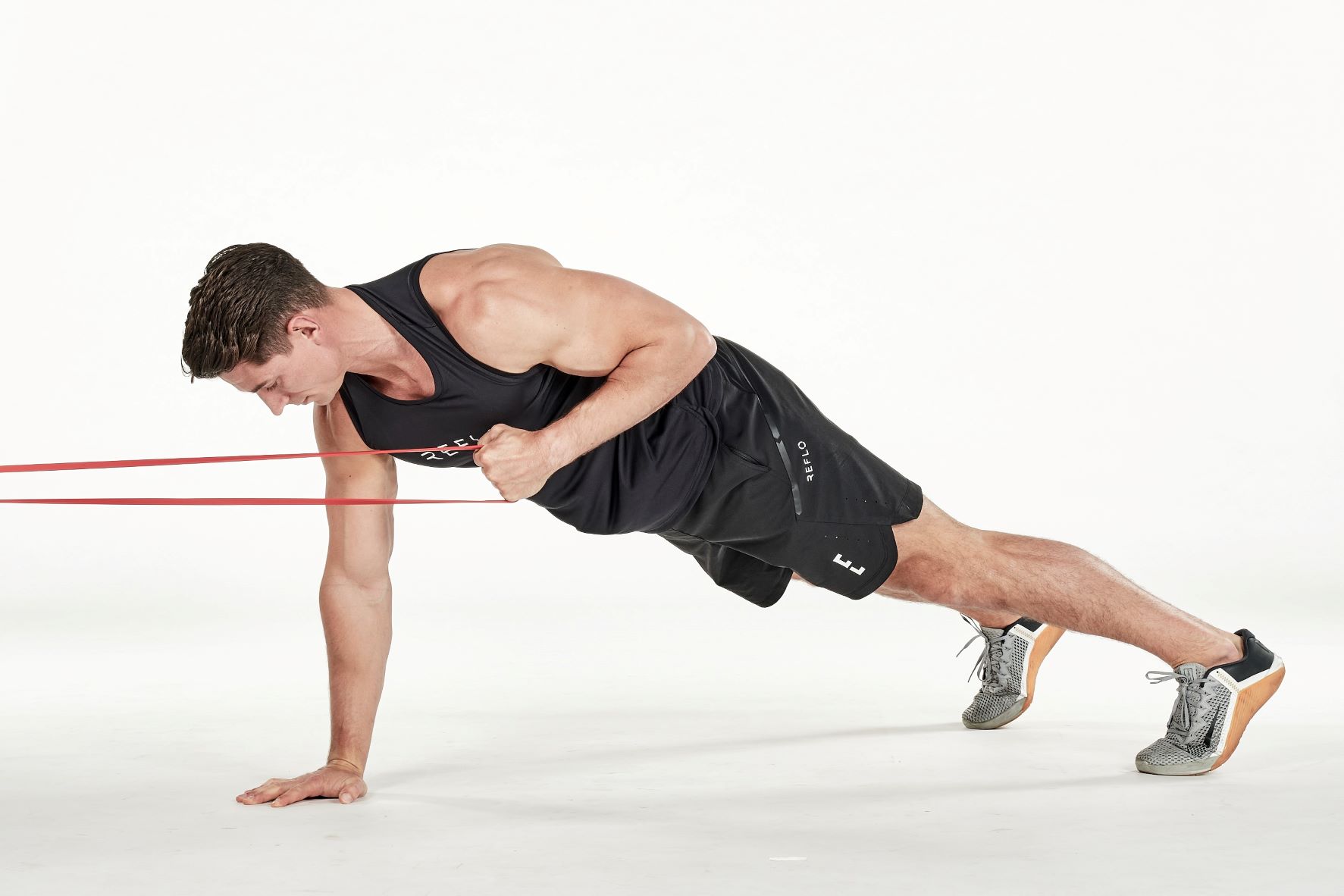
Target areas: Core, lats
Why I like it: This one’s a no-brainer if you’re looking to train your lats, rhomboids, traps and triceps. But for me this is one of the best ways to strengthen your rotator cuffs too.
- You’ll need an anchor point for this one – either a pole or willing training partner
- Loop one end of the band around the anchor point
- Get into a high plank/press-up position, a couple of feet away from the anchor
- Maintaining the high plank, reach one hand out and grab the end of the band
- Keep your core braced as you pull the band towards your hip
- Release and repeat
- Do all reps on one side, then switch
Resistance band Russian twist
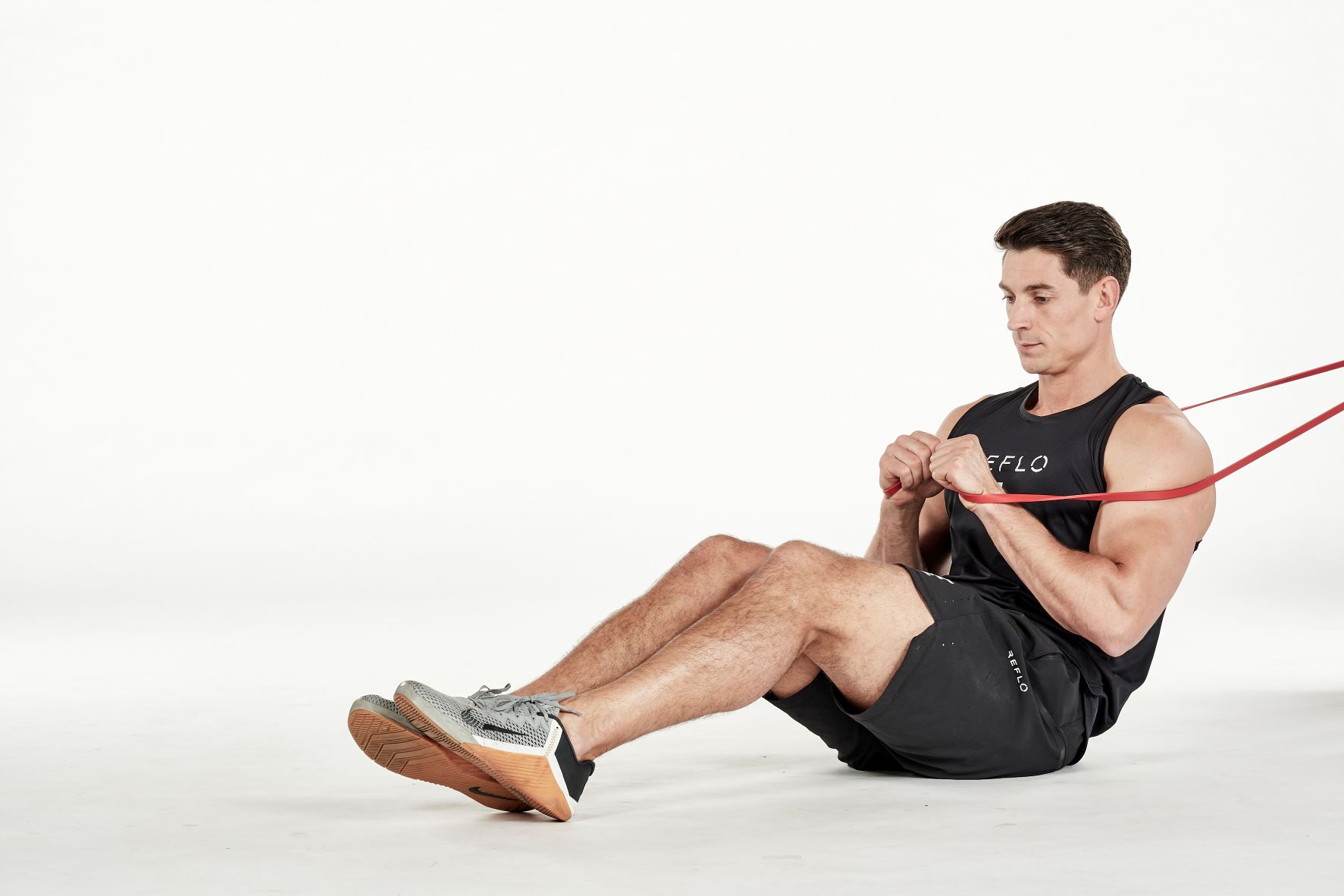
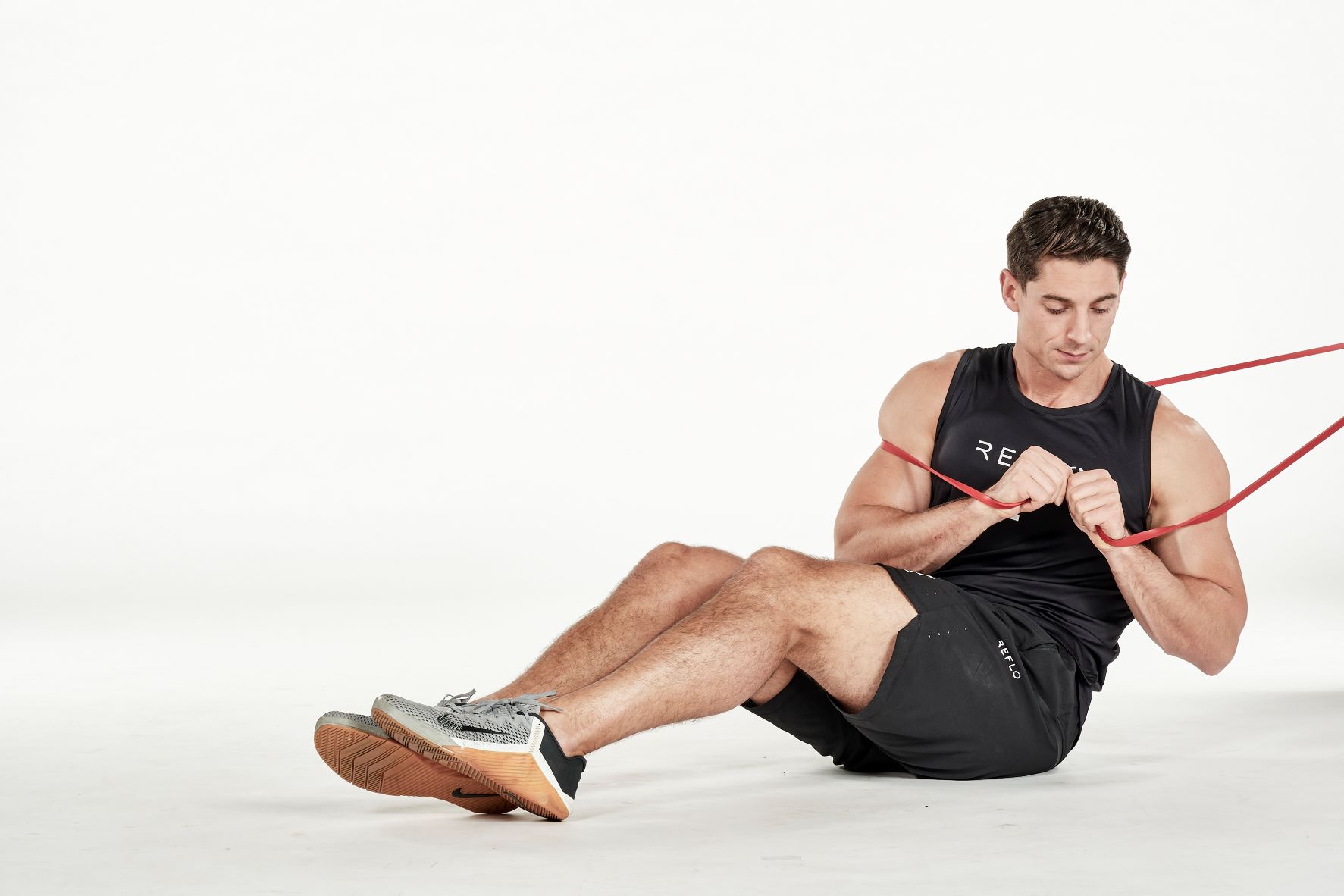
Target areas: Core
Why I like it: Doing the Russian twist with a resistance band is one of the best ways to correct the common mistakes that can result in injury. Being under constant tension forces you to correct your balance, which could otherwise put pressure on your lower spine.
- Loop the band around a fixed anchor point
- Grab the end of the band and bring it over your head, holding it at chest height
- Lean back slightly and twist your torso to one side with control, then the other
- You can also make it harder by lifting your feet off the floor slightly
Benefits of training with resistance bands
Resistance bands are one of the most versatile bits of kit you can have in your gym bag, ideal for warming up, stretching and building muscle. You can even use more heavy duty resistance bands for everything from assisted pull-ups to increasing tension in a bench press.
Another big benefit of training with resistance bands is that you are in control of the level of resistance, depending on how hard or far you stretch them. Also, unlike free weights, which vary in tension at different points of a lift, pull or push because of gravity, a resistance band provides a set, consistent amount of tension throughout the exercise.
Lastly, a huge perk of resistance bands versus weights is that they’re super lightweight and portable. Unlike other strength training equipment, like dumbbells and weight plates – which are a workout in themselves to transport – resistance bands can be added to your gym bag without adding any extra weight, making them ideal for working out on-the-go or while traveling.
Can you build muscle with resistance bands?
There’s a common misconception that resistance bands are only suitable for stretching. While they are a handy tool for improving mobility, I hope the above exercises illustrate you can also build muscle with resistance bands. They are effective strength training companions in their own right – suitable for everything from light muscle activation in a warm-up to super-strengthening training sessions.
A scientific review published in 2019 found that elastic resistance training was able to promote the same strength gains as conventional resistance training. While research from 2012 concluded that a progressive resistance training plan could boost skeletal muscle mass, muscle strength and reduce body fat.
How to exercise with resistance bands
If you’re a complete beginner looking to learn how to use resistance bands effectively, there are some dos and don’ts I recommend you keep in mind. Educator, strength coach and mobility specialist Jack Hanrahan has been coaching clients in strength training, cardio and mobility for 15 years. Here, he shares his top tips for resistance band training success:
- Start light – Find the appropriate band; start with a lighter resistance band and only progress when you can perform the exercise through a full range of motion.
- Slow down – Perform at a slow controlled tempo so the band isn’t jerking you around and it doesn’t whip you back.
- Stay secure – Anchor the band to something secure, like a fixed park bench or thin tree – not a curtain rail.
- Grip strong – Use a strong grip and anchor the band under the middle of your foot.

